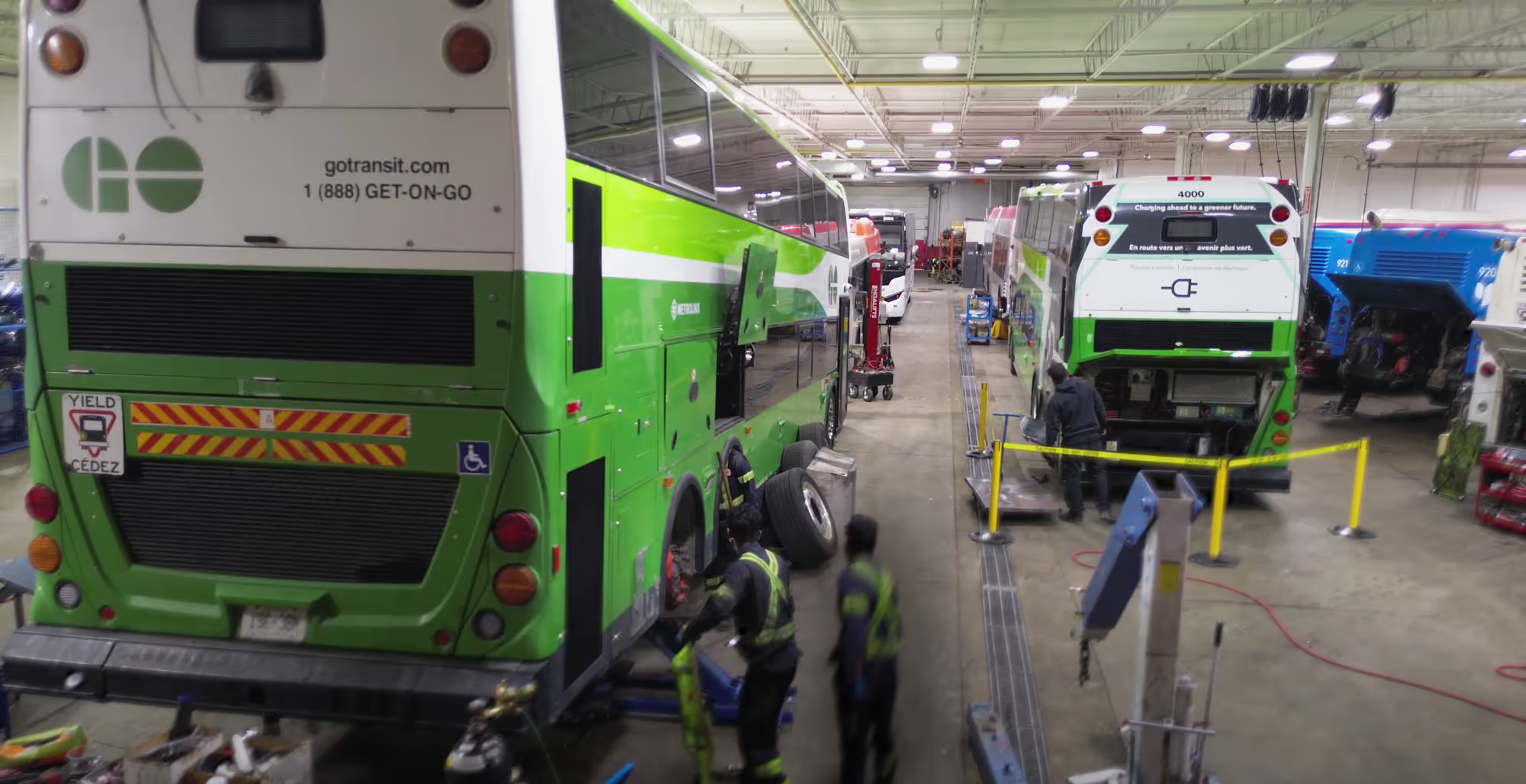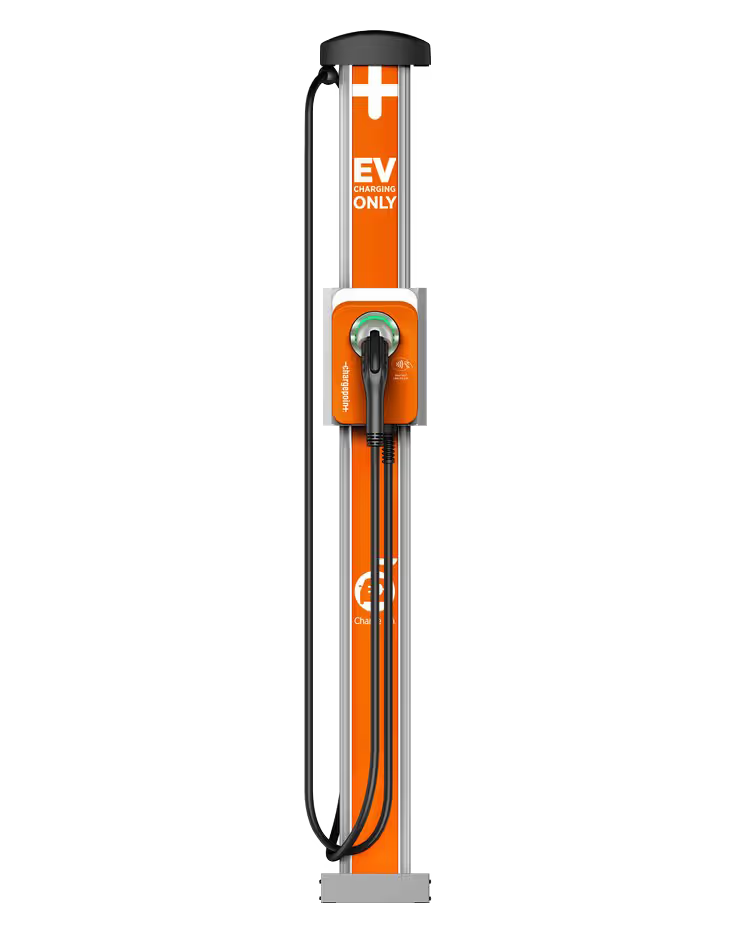eJEST passed the Altoona test, with an aggregate score of 92.9
🚍 The Karsan eJEST, the pioneering minibus of North America, recently aced the Federal Transit Bus Test, excelling in the challenging "Energy Economy and Range Test. Energy Consumption is a pivotal consideration for transit agencies venturing into electric vehicles (EVs), and the eJEST presents substantial advantages for agencies in North America. This evaluation, conducted at a seated load weight of 10,720 lbs, offers a realistic assessment of the eJEST's capabilities under typical transit conditions.
Key Benefits for Transit Agencies 🔑:
💰 Operational Cost Savings: Lower energy costs lead to reduced expenses on electricity or fuel, contributing to a favorable total cost of ownership over the vehicle's lifespan, impacting the financial sustainability of transit operations.
🔌 Charging Infrastructure Optimization: Understanding energy consumption aids transit agencies in planning and optimizing their charging infrastructure. The eJEST's efficiency may require fewer charging stations, reducing infrastructure costs and facilitating streamlined deployment.
📊 Insights from the "Energy Economy and Range Test":
🚦 Driving Cycle Efficiency:
Manhattan Cycle: 975 Wh/mile, ideal for low-speed urban conditions.
Orange County Bus Cycle: 910 Wh/mile, effective in mixed urban and highway scenarios.
HD-UDDS Cycle: 1057 Wh/mile, demonstrating highway-oriented performance.
🔄 Versatile Performance: Efficient performance in different driving cycles makes the eJEST versatile, catering to various terrains and meeting diverse passenger needs.
🌆 Suburban Transit Value: The eJEST's extended range suits suburban routes, contributing to operational flexibility and reliability without frequent recharging.
📈 Energy Consumption Metrics Per Seated Passenger 🚶:
Manhattan and Orange County Bus Cycle: 75 Wh and 70 Wh, respectively, showcasing efficiency.
HD-UDDS Cycle: 81 Wh, slightly higher due to highway demands.
🔌 Impressive Charger Efficiency: The eJEST exhibits a remarkable charger efficiency of 97%, ensuring effective recharging with minimal energy losses. The energy consumption results for the Karsan eJEST mini-bus are generally quite competitive and can be considered low consumption across different driving cycles, especially when compared to larger and more traditional vehicles.
👫 Customer Experience and Appeal: The eJEST's electric propulsion system provides quieter rides, enhancing comfort and appeal for suburban transit, potentially attracting more riders.The #Karsan eJEST not only meets but exceeds expectations in energy efficiency, making it an ideal choice for transit agencies seeking sustainable and cost-effective solutions for their fleets. Contact #Damera for any questions, we are a dedicated team that will lead you through the process of electrification🔌🌿
🚍 Discover the Safety Excellence of the eJEST Electric Bus!
In the dynamic world of electric mobility, safety takes the front seat. The eJEST's recent Safety Test showcased its outstanding handling, stability, and a commitment to safety. Although maximum speed is 65 mph (105 kmh) the Altoona tests were performed at 45mph (73 kmh).
🌐 Advantages:
Enhanced Safety: With impeccable handling and stability, the eJEST ensures a secure and comfortable ride for passengers.
Operational Impact: Smoother maneuvers contribute to a more efficient and reliable transit operation, positively impacting passenger satisfaction.
Cost Savings: Improved safety features translate into potential cost savings, making the eJEST a financially sustainable choice.
🌟 Capabilities: The eJEST effortlessly mastered both right-hand and left-hand double-lane change tests, proving its capabilities in real-world scenarios.
User testimonials also attest to its reliability, making it a preferred choice among transit agencies.🛣️ The test course featured pylons and painted guidelines, creating two lanes 12 feet apart. Each lane had two gates, each 100 feet long, spaced 100 feet apart. The bus entered one lane, crossed over to the other within a 100-foot gate, traveled 100 feet, and returned to the original lane within the next 100-foot gate. This process was repeated, starting at 20 mph and increasing speed by 5 mph increments. The test was conducted from both the right and left lanes. The tire/ground contact patch remained secure, emphasizing the bus's stability during the entire test.
The eJEST effortlessly aced both right-hand and left-hand double-lane change tests, showcasing its capabilities by smoothly navigating the course at a maximum speed of 45 mph. The manufacturer's commitment to excellence was evident through a software update that enhanced the bus's speed to meet the demands of this test. This demonstrates the flexibility and adaptability of this electric vehicle, where certain parameters can be adjusted through software. This is crucial for demonstrating the vehicle's capability in challenging scenarios. To ensure the safety and effectiveness, the bus needs to be capable of reaching and maintaining that maximum speed without compromising stability or losing contact with the pavement.🔌
🔉 Noise Test
Electric vehicles, like the eJEST, produce significantly lower noise levels compared to their diesel counterparts, creating a quieter and more enjoyable ride for passengers and reducing noise pollution.Recent tests show that with an outside ambient noise level of 40.1 dB(A), the average of the two highest readings obtained while accelerating from a constant speed was 66.6 dB(A) on the right side and 67.0 dB(A) on the left side. Compared to a diesel-powered bus, where the noise level reaches 80 dB, it is clear that this electric vehicle has a much lower noise level.When accelerating from a standstill with an exterior ambient noise level of 39.6 dB(A), the average of the two highest readings obtained were 64.9 dB(A) on the right side and 65.4 dB(A) on the left side.With the vehicle stationary and the engine, accessories, and air conditioning on, the measurements averaged 53.6 dB(A). With the accessories and air conditioning off, the readings averaged 41.1 dB(A). The exterior ambient noise level measured during this test was 42.0 dB(A).Internal noise affects drivers' well-being and directly impacts passenger comfort. The harmful effect of noise on humans is manifested on the psychological and physiological level, and its impact depends on several factors, the most important of which are: the level (intensity) of noise, frequency spectrum, and exposure time. As stated in the International Journal of Sustainable Built Environment, 2014, Vol.3, pp.199-206, as many as 65% of surveyed drivers had been diagnosed with some health problems caused by noise.The Karsan eJEST test showed that the interior ambient noise level for this test was less than 30 dB(A). No vibrations or rattles were noted during the third part of this test. This bus successfully passed this section of the test, demonstrating its capability to create an appealing working environment for drivers.It's our responsibility to prioritize the comfort and well-being of passengers and communities alike. By embracing electric transit solutions like the Karsan eJEST, we can create a quieter, more sustainable future for public transportation. Let's lead the way in reducing noise pollution and building a better transit experience for all.
Partner with Damera. Our comprehensive training programs and robust support system are tailor-made for electric buses, empowering agencies to operate and maintain their fleets with the utmost safety.





.svg.avif)









.svg)
 EV BusesKarsan eJEST
EV BusesKarsan eJEST EV BusesKarsan eJEST Autonomous
EV BusesKarsan eJEST Autonomous EV AND DIESEL COACHESTEMSA
EV AND DIESEL COACHESTEMSA accessible transit vehiclesMICROTRANSIT SOLUTIONS
accessible transit vehiclesMICROTRANSIT SOLUTIONS





















-p-500-p-500.avif)






















